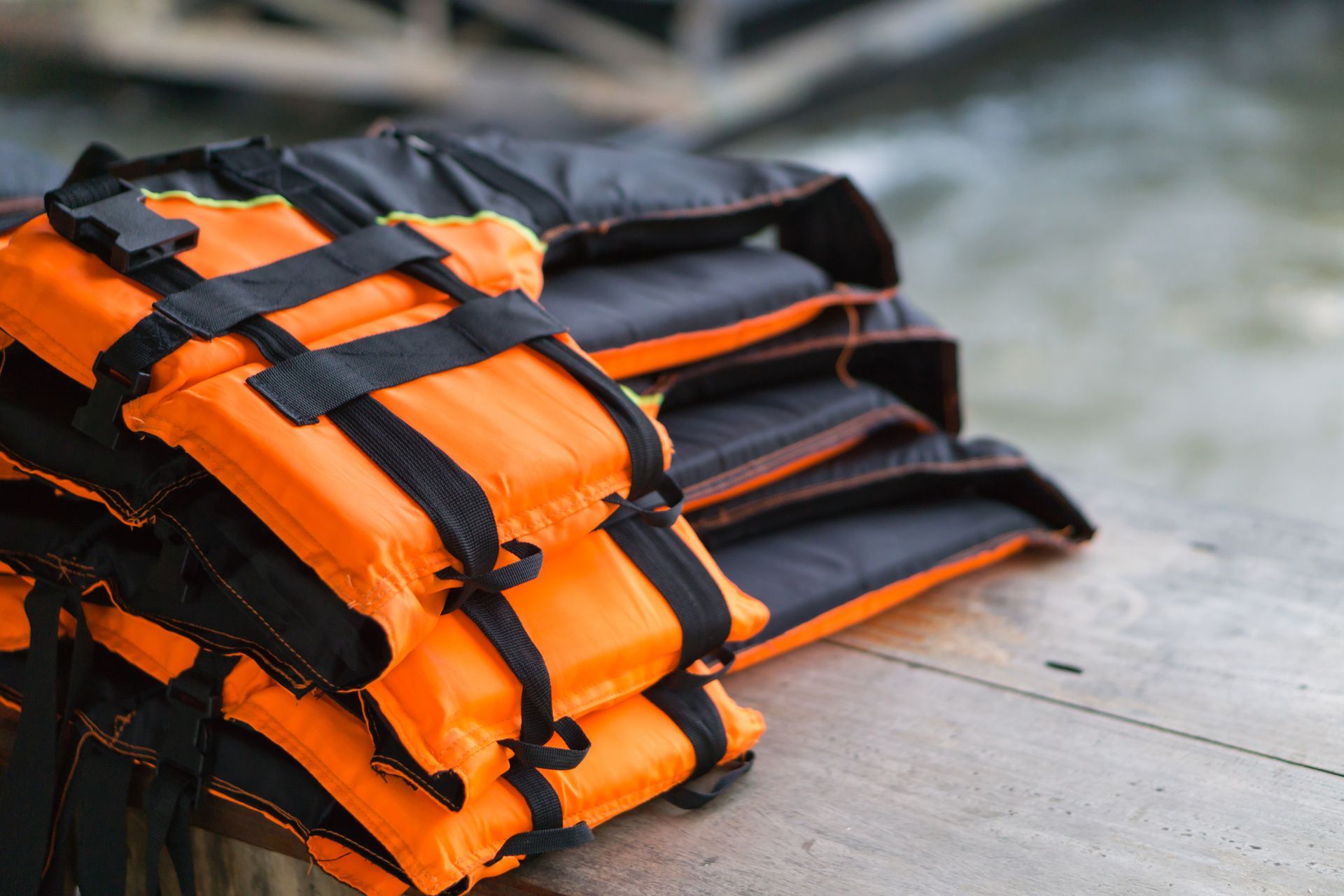Boating in Arizona: Wearable Device Laws and Requirements

The desert climate makes boating in Arizona possible year-round, especially as boaters look to cool off in hotter temperatures. From expansive lakes like Saguaro Lake and Lake Powell to canyon-weaving rivers like the Colorado River and Salt River, it’s no wonder that some Valley residents consider taking up boating as a hobby.
While boating is a popular outdoor pastime in the summer, it can be dangerous if you don’t adhere to Arizona's boating laws and regulations. The state upholds these laws and requirements to ensure boaters practice safe boating etiquette to keep themselves and other water enthusiasts out of harm's way. One mistake or careless boater is sometimes all it takes to cause a boat accident.
If you own a boat or plan to rent one, it’s important you know and understand Arizona boating laws to ensure you have the best (and safest) experience on the water as possible.
Wearable flotation devices like a vest or jacket are some of the key safety requirements while operating or occupying a boat in the state of Arizona. This is one rule you do not want to break because all watercrafts are required to carry flotation devices (wearable, throwable or both).
What Are Arizona’s Requirements for Wearable Devices on Boats?
All watercraft in Arizona must follow these flotation device laws and requirements:
- Personal flotation devices, including wearable and throwable devices must be approved by the United States Coast Guard (USCG)
- Children 12 years and younger are required by law to wear a USCG-approved personal flotation device (type I, II or III) anytime the watercraft is underway (this is not a requirement for adults)
- Boats under 16 feet, including all kayaks and canoes must carry at least one personal flotation device (wearable or throwable) for each person on board the watercraft
- Boats 16 feet and over are required to carry at least one throwable device (i.e., cushion or ring buoy) and a wearable device (i.e., vest or jacket) for each person on board
- Any person being towed or wakesurfing behind a watercraft must wear a personal flotation device (like a life jacket) or buoyant belt
Although not required by law, all pets aboard a watercraft should also have a wearable device.
What Are the Different Types of Wearable Devices?
According to the BoatUS Foundation for Boating Safety and Clean Water, there are different types of flotation devices to choose from depending on the boating activity. All flotation devices have their own set of recommended uses and features, giving boaters a selection of wearable and throwable devices.
To ensure you and your boat passengers are safe, be sure to have the correct flotation devices on board as designated by their intended use or activity.
Some of the common flotation devices may include:
Type I (Inherently Buoyant) – These flotation devices work best in open, remote or rough waters where rescue may take longer to arrive because they offer the best protection and keeps a person’s head above water. They should be used while performing boating activities, such as cruising, racing, offshore fishing or in stormy conditions or while boating alone.
- Minimum buoyancy is 22 pounds for adults and 11 pounds for children
Type II (Inherently Buoyant) – These flotation devices are ideal in calm inland waters (close to shore) where immediate rescue is possible. Type II flotation devices provide less flotation than Type I, which means they are not suitable for an extended period of survival in rough waters and often require the wearer to tread water in order to keep their head above the surface.
- Minimum buoyancy is 15.5 pounds for adults
Type III (Inherently Buoyant) – Similar to Type II, these flotation devices are best suited for inland waters during supervised activities, such as water skiing, fishing, kayaking, dingy races, etc. Type II devices are not designed for turning an unconscious person face up in the water.
- Minimum buoyancy is 15.5 pounds for adults
Type IV (Throwable Device) - These flotation devices are not intended to be worn but thrown to a person overboard to provide buoyancy or supplement the buoyancy of their wearable device. The device style ranges from a square cushion to a ring or horseshoe-shaped buoy and it should be readily available for immediate use.
- Minimum buoyancy is 18 pounds for a square cushion or 16.5 pounds for a ring-styled buoy
Have You Been in a Boating Accident? Get in Touch with a Phoenix Lawyer Today
If you were in a boating accident due to another boater’s carelessness or failure to adhere to state boating laws, you may be eligible for compensation. Personal injury lawyers who specialize in boating accidents can help file your personal injury case and seek compensation for your losses.
We include only the best qualified lawyers on the PHX Elite Lawyers list to help connect you with a local law office after you’ve been injured in an accident. Explore our list of Phoenix attorneys and get in touch with a legal team today.
PHX ELITE LAWYERS
All Rights Reserved | PHX Elite Lawyers



